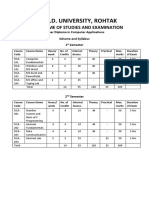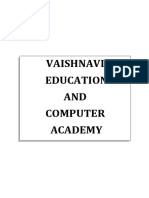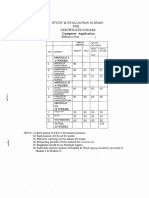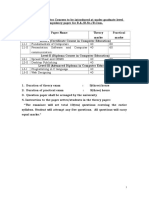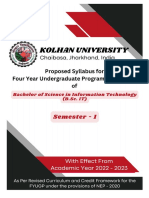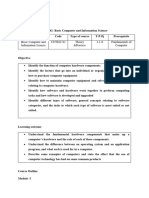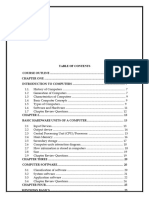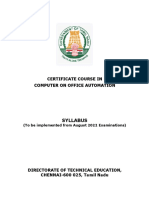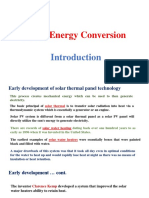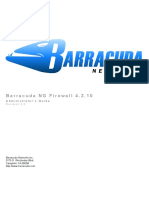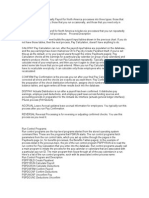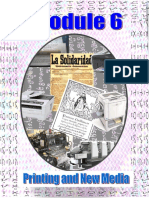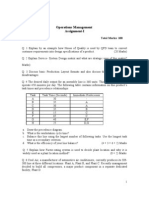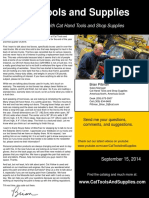SEMESTER 1st to 3rd
MULTI-DISCIPLINARY COURSE
CAP022I COMPUTER APPLICATIONS (INTRODUCTION TO COMPUTERS)
CREDITS: 3
COURSE OBJECTIVES
1. To introduce the fundamentals of computing devices and reinforce computer vocabulary, particularly
with respect to personal use of computer hardware and software, the Internet, networking and mobile
computing.
2. To provide hands-on use of Microsoft Office 2013 applications Word, Excel, Access and PowerPoint.
Completion of the assignments will result in MS Office applications knowledge and skills.
3. To describe the organization and operation of a computer processor, primary and secondary
memory, peripheral devices and to give computer specifications
UNIT – I: COMPUTER BASICS
Introduction: Characteristics of Computer, Classification of Computers, Architecture and Chronology,
Applications of Computer. Block Diagram of Computer.
Commonly used Terms: Hardware, Software, Firmware, Units of Measurement of Storage, Input/ Output
Devices, Types of Memory, Generation of Computer Languages, and Introduction to Internet & E-Mail.
UNIT – II: OPERATING SYSTEM BASICS & GUI USING MS-WINDOWS.
Application Software and System Software, Open-Source Software and Proprietary Software.
Computer Languages and its types (Machine Language, Assembly Language, High Level Language)
Translators, Compiler, Interpreter. Operating System and its functions.
UNIT –III: INTRODUCTION TO MS OFFICE
MS Word Basics: Basics of Word Processing, Text Selection, Opening Documents and Creating Documents,
Saving Documents/Quitting Documents, Printing Documents. Using the Interface (Menu Toolbars), Editing
Text (Copy, Delete, Move Etc.). Finding and replacing text. Special check Feature/ Auto correct Feature,
Grammar check Facility, Formatting and Editing. Mail Merge, Bullets & Numbering, Borders and Shadings.
MS EXCEL BASIC:
Worksheet Workbook, Workspace Basics, Data Entry in cell, Entry of Numbers, Text and Formulate,
Moving Data in the Worksheet, Selecting Data Range, Using the Interface (Toolbars, Menus), Editing
basics, working with Workbooks Saving and Quitting, Cell Reference, Formatting, Editing.
MS POWER POINT BASICS:
Use of existing templates, fonts and drawing. Hands of MS PowerPoint, Creation of animated slides.
REFERENCE BOOKS:
1. Computer today, Donald H. Sanders, McGraw Hill Publishing Company.
2. Microcomputers Software and Applications, Dennis P. Curtin and Leslie R. Portel, PHI.
3. Data Processing: An Introduction, Donald P. Spencer and Charles R. Merril Pub. And Co.
4. Computers and Their Applications, Larry Joel Goldestein, PHI.
5. Windows-2000, kethy, Tata McGraw Hill Publishing Company.



